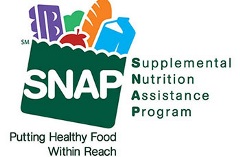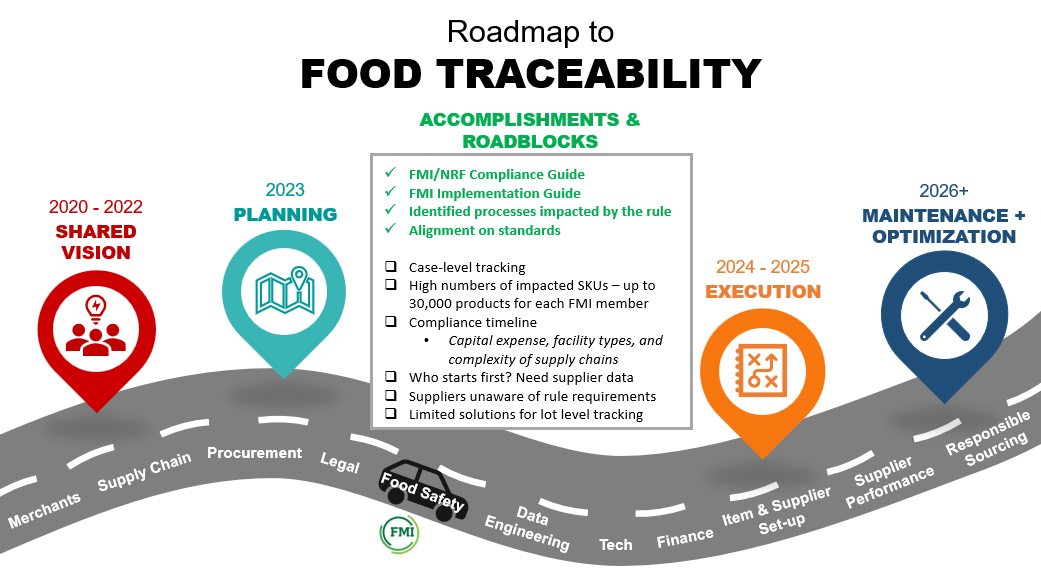By: Hannah Walker, Vice President, Political Affairs, FMI
 There have been several developments in the Supplemental Nutrition Assistance Program (SNAP)over the past several weeks. Since these developments are happening on multiple fronts, we thought it would be helpful if we compile the most important updates in one place to help our members navigate and prepare for changes in SNAP.
There have been several developments in the Supplemental Nutrition Assistance Program (SNAP)over the past several weeks. Since these developments are happening on multiple fronts, we thought it would be helpful if we compile the most important updates in one place to help our members navigate and prepare for changes in SNAP.
Benefit Levels: SNAP benefit levels have substantially increased over the past year and may continue to increase.
1. The COVID-19 relief package that was signed into law in late December 2020 included a 15% increase to SNAP benefits. This increase is currently temporary. It went into effect in January and will run through June.
- President Biden has called on Congress to extend the 15% increase beyond June. He has asked for it to continue through the fiscal year or through the current health emergency.
*It is important to note: This extension will require Congress to act, Biden cannot extend it administratively.
2. Executive Orders: President Biden also signed an Executive Order (EO) requesting the United States Department of Agriculture (USDA) revisit the current Thrifty Food Plan (TFP), which is used to determine the maximum SNAP benefit levels. The EO requests Food and Nutrition Service (FNS) ensure the TFP reflect(s) the modern cost of a healthy basic diet. If USDA increases the TFP, we could see a corresponding increase to the maximum SNAP benefit allowance.
3. Emergency Allotments: The Families First bill that was signed into law last spring authorized USDA to grant waivers to allow states to issue Emergency Allotments (EA) to families in addition to their monthly SNAP benefits. USDA can continue to permit EAs if there is a federal health emergency declaration, and the requesting state has one in place. Currently, all states are eligible to receive emergency allotments. The current USDA guidance allows states to issue EAs to bring families up to the national SNAP benefit maximum. While this benefits many families, those that were already at the maximum were not eligible to receive EAs.
- President Biden’s EO directed USDA to review the current EA guidance to determine if families at the maximum benefit level can receive EAs. If USDA determines they can, we can expect that states will change their requests to include those families.
- If authorized, it’s unclear how much in EAs families who are at the maximum will qualify for. One proposal includes allowing another 50% in benefits per family. FMI is closely monitoring the discussions around the EAs and will provide updates as things develop.
- There has been some confusion as to how the EAs work regarding the 15% benefit increase. USDA supplied the below example to help clarify confusion:
- Assume this is a 1-person household in one of the lower 48 States and they were receiving $100/month in benefits. EA before the change brought them up to the maximum benefit for a household of one which was $204. Therefore, EA was $204-$100 = $104
- Now the base benefit is $115 for that household due to the 15% increase. The max allotment for a one-person household has also increased by 15% to $234. The EA is now $119 ($234-$115 = $119)
Participation Rates: We all know we are safe in saying SNAP participation has increased over the past year. However, we often ask, by how much? What states have seen the largest increase?
1. USDA recently updated its SNAP data tables through September 2020. The data tables confirm what we have long assumed, SNAP participation has increased over the past year. By September 2020, SNAP participation had grown by 14% from the previous year with over 42.9 million participants receiving $7.87 billion a month in benefits. You can access the USDA SNAP data tables here.
SNAP Eligibility: There have been several changes impacting SNAP eligibility over the past year, which has an impact on participation.
1. Waiver of Work Requirements: As part of its COVID-19 relief bill, Congress waived the existing work requirements for SNAP. This waiver allows individuals who would typically be time limited in participation, generally called Able Bodied Adults Without Dependents (ABAWD), to keep their SNAP benefits even if they are not working or participating in some form of work training.
2. Public Charge Rule: The Trump administration’s Public Charge Rule would have added SNAP participation to the definition of public charge, therefore, potentially disqualifying legal immigrants who participated in the program from getting a green card or remaining in the country. The rule was challenged in court, with the Second Circuit finding that it violated the Administrative Procedures Act. It is widely thought that the Biden Administration will not appeal this decision, leaving it essentially null and void. While the final rule was never able to go into full effect, it was thought to have a chilling effect on immigrants participating in the program. With the rule now considered dead, we may be able to expect an increase in immigrant participation.
3. Proposed Categorical Eligibility Rule: The previous Administration was working to finalize a rule to greatly restrict state’s abilities to establish SNAP eligibility using Categorical Eligibility (Cat El). The proposed rule was withdrawn in December 2020. We do not expect the new administration to try and make changes to tighten Cat El.
4. Proposed Standard Utility Allowance Rule: Like the proposed Cat-El Rule, the Trump administration issued a proposed rule to tighten the standard utility allowance formulas states use when determining SNAP benefit levels. This rule was also withdrawn in December 2020 and we do not expect the Biden administration to revisit it.
SNAP Online: With rollout almost nationwide, the need for more retailers to be authorized has only grown.
1. Expedited State Authorizations: In 2020, FNS quickly authorized 47 states to offer SNAP ordering and payment online. What had previously been a targeted pilot in only a few states quickly became a national effort, resulting in all but three states authorized to use SNAP online.
2. The path for retailers is not as fast. While states were quick to go live, the process for retailers has proven to be much slower and challenging. We were thrilled to see additional retailers authorized to go live in the fall, and quickly expand to other states, FMI recognizes most of our members are still in the queue working through the long process of authorization. This is an area FMI is keenly focused on, and how we can help move the process along. This is certainly an area where we want to hear from our members on how the process can be improved to work better for you.
3. One piece that we have been closely watching is the launch of a second online PIN provider. Just within the last week, a second online PIN provider, Worldpay, went live with a retailer in Florida with plans to expand to additional states in the coming weeks. With this development retailers will have an option of choosing which online PIN provider they would like to partner with when launching SNAP online.
P-EBT Benefits will Increase, When Will Families Get Them?
1.) Congress reauthorized and expanded P-EBT to cover the 2020-2021 school year. In addition to the SNAP directives in his Executive Orders, President Biden challenged USDA to review the guidance for P-EBT and determine if the benefits should be increased. The USDA replied with updated guidance to clarifying the “qualified childcare” provisions in the September expansion of P-EBT. Additionally, the guidance increases the daily benefit for children to include the value of afternoon snacks. The new daily value is $6.82 per child. It is important to note, this is a change from the previous guidance, and the states that have already been approved for this school year did not use this when seeking approval. We would expect those states to go back and amend their plans to reflect the new value. You can view the updated P-EBT guidance here.
I know we have covered a wide variety of topics in this blog, as I said at the beginning, things are very busy in the world of SNAP!
We hope you find this useful and encourage you to reach out with any questions or if FMI can be helpful. We will continue to update this blog as things develop with the new Administration, so stay tuned!


 Industry Topics address your specific area of expertise with resources, reports, events and more.
Industry Topics address your specific area of expertise with resources, reports, events and more.
 Our Research covers consumer behavior and retail operation benchmarks so you can make informed business decisions.
Our Research covers consumer behavior and retail operation benchmarks so you can make informed business decisions.
 Events and Education including online and in-person help you advance your food retail career.
Events and Education including online and in-person help you advance your food retail career.
 Food Safety training, resources and guidance that help you create a company food safety culture.
Food Safety training, resources and guidance that help you create a company food safety culture.
 Government Affairs work — federal and state — on the latest food industry policy, regulatory and legislative issues.
Government Affairs work — federal and state — on the latest food industry policy, regulatory and legislative issues.
 Get Involved. From industry awards to newsletters and committees, these resources help you take advantage of your membership.
Get Involved. From industry awards to newsletters and committees, these resources help you take advantage of your membership.
 Best practices, guidance documents, infographics, signage and more for the food industry on the COVID-19 pandemic.
Best practices, guidance documents, infographics, signage and more for the food industry on the COVID-19 pandemic.
